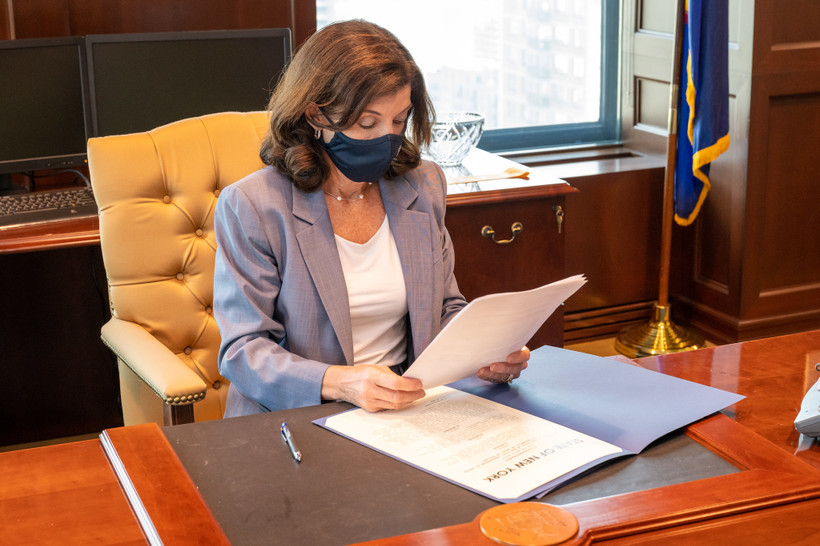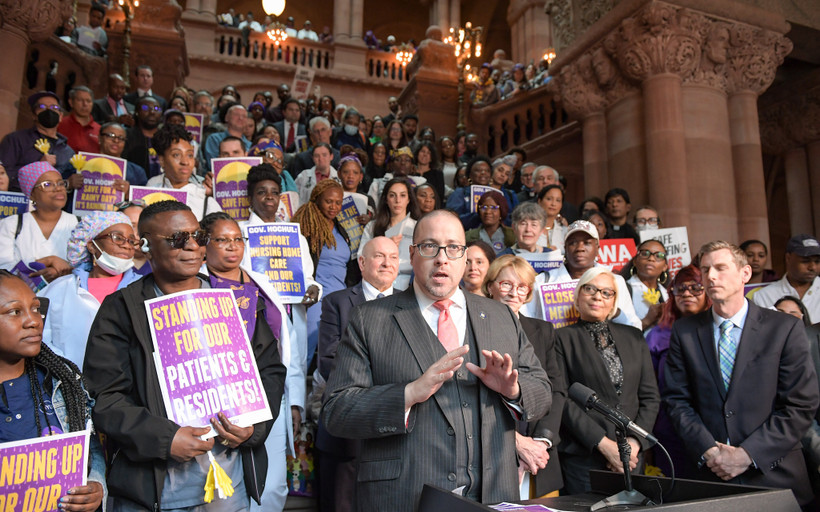Hochul’s Chapter Amendments Could Undermine New Birth Center Law
A rift grew among birth advocates as progressive legislators asked them to compromise with the governor – or risk a veto.


A version of good cause eviction and new hate crimes are in; new taxes on the wealthy and education cuts are out. Here’s where things landed in this year’s budget.
The Assembly rejected legislation that would have sped up New York’s transition away from gas.
Low-wage manual laborers can sue to make their bosses pay them weekly. Hochul’s late-breaking budget addition may undermine that right.
Hochul’s proposed Medicaid cuts include $125 million from Health Homes, a program that connects the neediest New Yorkers with medical care, food assistance, and more.
Stark disparities in access to life-saving medication for opioid addiction persist between facilities — and racial groups.
New York legislators have a plan to claim billions in federal funding for health care, driving a fight between industry groups.
As real estate developers resist wage guarantees and try to roll back tenants’ rights, a potential budget deal is at an impasse.
As the state legislature considers a bill to change warranty payments, unions join their bosses to make car companies pay more.
As the relationship was coming to light, Heastie returned $5,000 in campaign cash to a labor group from which he’d recused himself.


